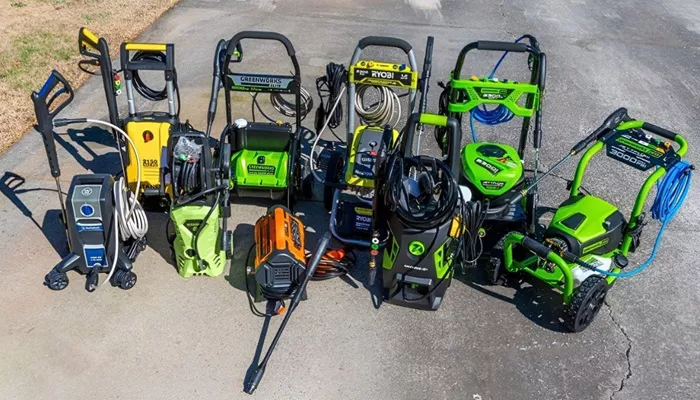Maintaining a clean car is not just about aesthetics but also about preserving its value and longevity. Over time, cars accumulate dirt, grime, mud, and various contaminants from the road, which can dull the paint and potentially damage the surface. One popular method for cleaning cars is using a pressure washer. But the question on many car owners’ minds is: is it safe to pressure wash a car? This article will delve deep into this topic, exploring the ins and outs of using a pressure washer on your vehicle, potential risks, and how to ensure a safe and effective car – cleaning experience.
Understanding Pressure Washers
How Pressure Washers Work
Pressure washers are powerful cleaning tools that use pressurized water to remove dirt, stains, and debris from surfaces. They consist of a water inlet, a pump, a motor (either electric or gas – powered), a high – pressure hose, and a nozzle. Water is drawn in through the inlet, typically from a garden hose. The pump, powered by the motor, pressurizes the water to a high level. This pressurized water then travels through the high – pressure hose and is ejected from the nozzle at a high velocity, creating a forceful jet of water. The pressure at which the water is ejected is measured in pounds per square inch (PSI). Different models of pressure washers can generate varying levels of PSI, with some household – grade models producing around 1000 – 2000 PSI, while more heavy – duty or professional models can reach up to 3000 PSI or higher.
Types of Pressure Washers
There are two main types of pressure washers commonly used for car cleaning: electric and gas – powered. Electric pressure washers are popular among homeowners due to their ease of use. They simply plug into a standard electrical outlet, and they are generally quieter in operation compared to gas – powered models. Electric pressure washers are also relatively lightweight, making them easy to move around. However, they are limited by the length of the power cord, which can restrict their reach.
Gas – powered pressure washers, on the other hand, offer more mobility as they don’t rely on an electrical outlet. They are often more powerful, capable of generating higher PSI levels, which can be useful for removing stubborn dirt and grime. But they are louder, require more maintenance (such as oil changes and spark – plug replacements), and produce emissions, which may be a concern in some areas.
Potential Risks of Pressure Washing a Car
Paint Damage
One of the primary concerns when pressure washing a car is the risk of paint damage. The high – pressure water jet from a pressure washer can, if used incorrectly, strip away the clear coat or even damage the paint layer itself. If the nozzle is held too close to the car’s surface or if the PSI is set too high, the force of the water can cause micro – scratches on the paint.
These micro – scratches may not be immediately visible but over time can dull the paint’s shine and make the car more susceptible to rust and corrosion. Additionally, if there are any existing chips or cracks in the paint, the high – pressure water can exacerbate the problem, causing the paint to peel or flake off.
Damage to Trim, Seals, and Gaskets
Cars have various trim pieces, seals, and gaskets that are designed to keep water out and provide a finished look. Pressure washing can potentially damage these components. The force of the water can push under the edges of trim pieces, causing them to loosen or come off. Seals around windows, doors, and the hood can also be compromised. If water gets past these seals, it can enter the interior of the car, causing damage to upholstery, electronics, and other components. Gaskets in the engine bay can also be affected, leading to potential leaks or other mechanical issues.
Electrical and Mechanical Damage
Modern cars are filled with complex electrical systems and sensitive mechanical components. Pressure washing near these areas can pose a significant risk. Water can seep into electrical connectors, fuse boxes, and other electrical components, causing short – circuits. This can lead to malfunctioning of various systems in the car, such as the lights, radio, power windows, or even the engine management system. In the engine bay, water can damage alternators, distributors, and other mechanical parts if it gets into places where it shouldn’t be. Even if the car starts and runs immediately after pressure washing, there could be long – term damage that may not become apparent until later.
Damage to the Windshield and Windows
The windshield and windows of a car are generally made of tempered glass, which is strong but can still be damaged by high – pressure water if the nozzle is directed at them in the wrong way. The force of the water can cause small chips or cracks in the glass. Additionally, the rubber seals around the windows can be dislodged or damaged by the pressure, leading to water leaks or a poor seal.
Conclusion
In conclusion, pressure washing a car can be a safe and effective way to clean it, but it requires proper knowledge, the right equipment, and careful execution. By understanding the potential risks, taking the necessary safety precautions, and following the correct procedures, you can use a pressure washer to keep your car looking clean and new. Remember to choose the right pressure washer, select the appropriate nozzles, protect sensitive areas, maintain a safe distance, and use the right cleaning solution. Additionally, be aware of the special considerations for different types of cars. When done correctly, pressure washing can save you time and effort while ensuring your car remains in top condition. However, if you are unsure or uncomfortable with pressure washing your car, it may be best to seek the services of a professional car wash.
Related topics:
The 10 Most Powerful Karcher High Pressure Washers

